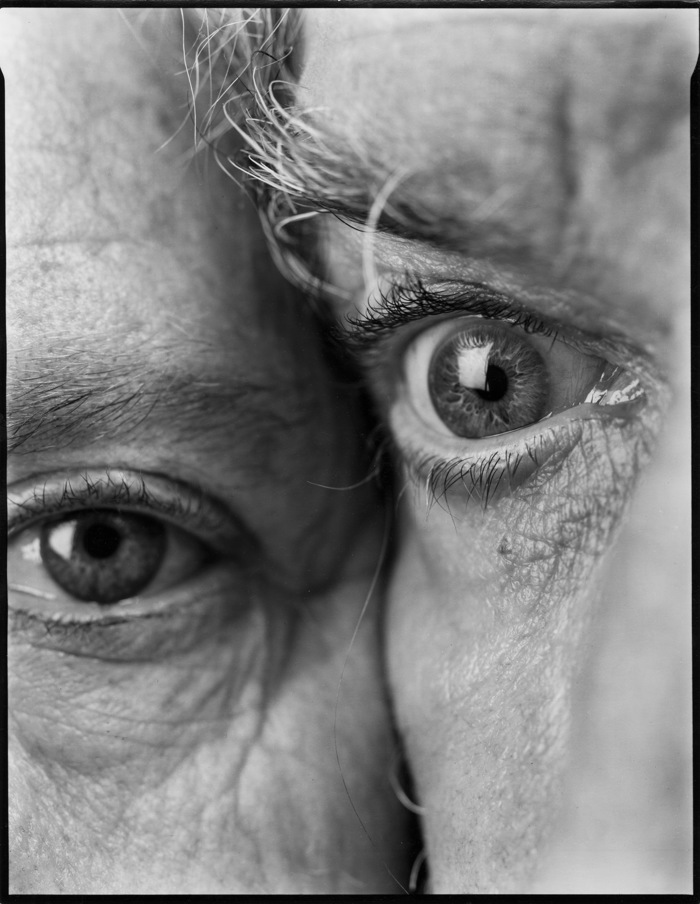
Nicholas Nixon “a tiny distance”
- Exposition
- Exposition
- Location Galerie le Château d'Eau
-
Public
- Tout Public
- Tout Public
- À partir de 10 ans
The first major exhibition in France of this photographer, an emblematic figure of American documentary photography in recent decades.
A gaze across the time
Nicholas Nixon has presented solo exhibitions at MoMA in New York on three occasions, in 1976, 1988 and 2014. His works have been displayed at museums and galleries across Europe, including in Hanover, Berlin, Brussels, Madrid and Barcelona, in addition to most major American museums. He is considered an authority on documentary photography in its purest, most American of forms: black and white, using large-format cameras and contact printing, which he did himself. All of which with an insatiable curiosity for the world around him. Whether it is cityscapes or his family; people suff Whether it is cityscapes or his family; people suffering from AIDS – he was one of the first to photograph them – or new-born babies; couples of all shapes and sizes or nudes; details from his usual environment, such as trees (one of his passions in recent years), children injecting life into the space around them or elderly people approaching the end of their lives; self-portraits, alone or with his wife Bebe, or net curtains fluttering in the wind and bathed in light, everything is a pretext for exploring the possibilities of photography and its relationship with the real world. Nicholas Nixon’s gaze is a gaze across time. And over the years, it’s as if this gaze has become more penetrating, more demanding, something akin to vertigo”.
Listing all the subjects tackled by Nixon is a way of doing justice to a body of work and an approach that has almost always been eclipsed by the masterful Brown Sisters series: for 46 years, he has been photographing his wife and her sisters in the perfect photographic ritual.
Strangely, we have had to wait until 2021 for a French gallery to present a monographic series on Nixon, and bring about the publication of the first work in French on this photographer who, now in his seventies, has already made his way into the history of analogue photography.
This was only possible thanks to the generosity of the Maison Européenne de la Photographie and its extensive collection, and the help of the Éric Dupont Gallery in Paris, the Fraenkel Gallery in San Francisco, and several private collectors. I’d like to extend my warm thanks to you all.
All 46 photographs of the Brown Sisters are exhibited on the ground floor, spanning from 1975 to 2021.
All 46 photographs of the Brown Sisters are exhibited on the ground floor, spanning from 1975 to 2021. You will find extracts from various series on the lower ground floor, some of which have never been exhibited before, demonstrating the consistency of a documentary approach that has, over time, built an increasingly intimate, intense relationship with the real world.
Christian Caujolle Artistic advisor at the Château d’Eau
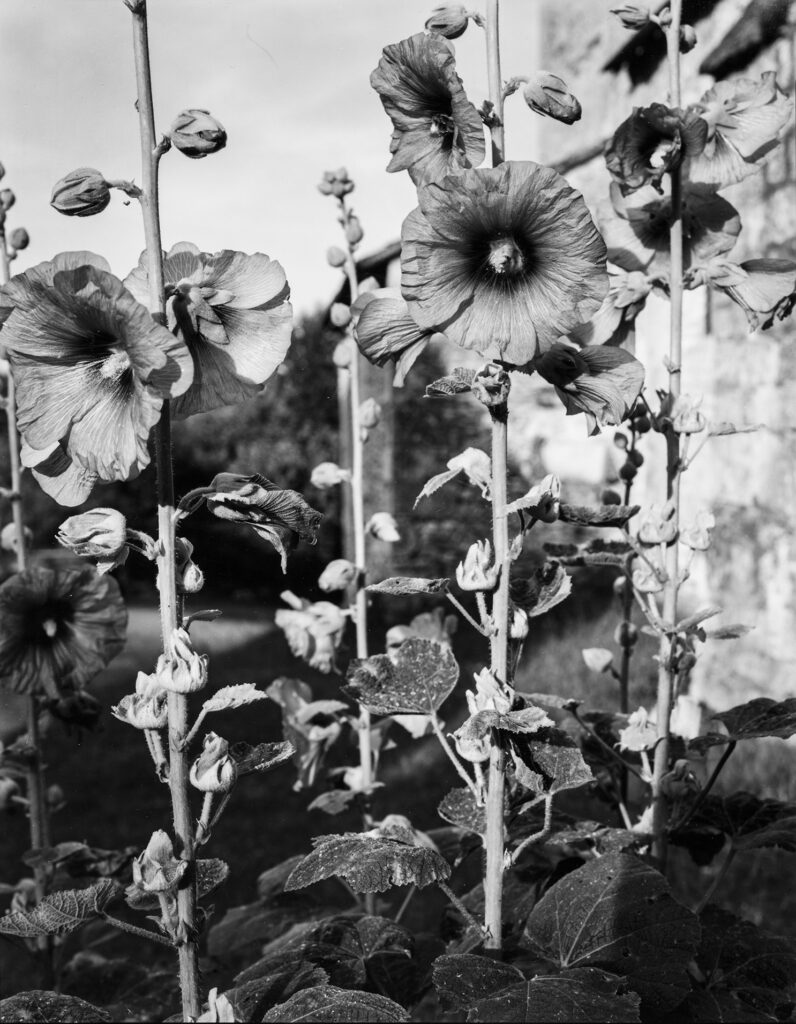
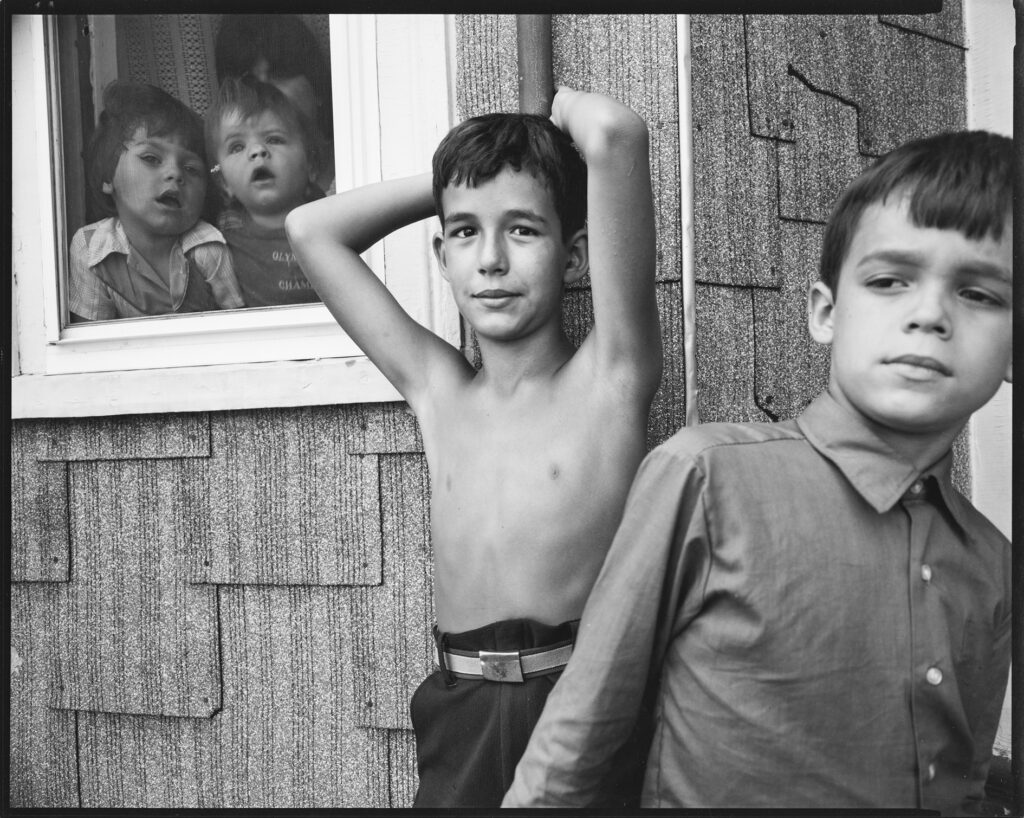
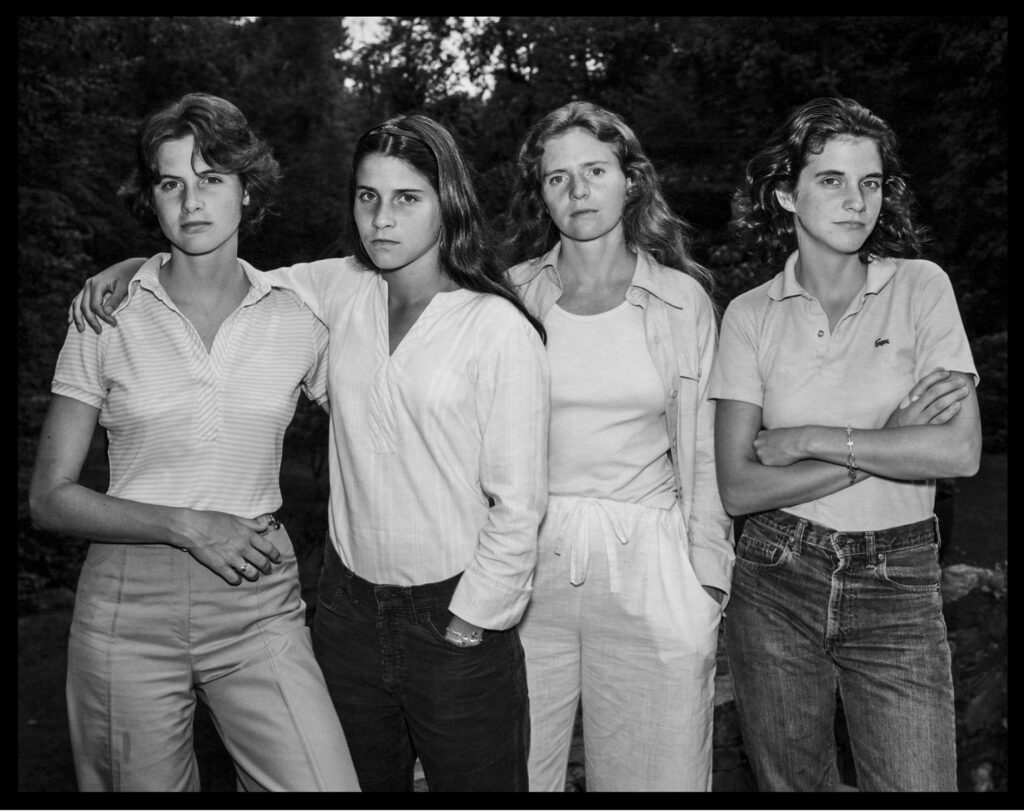
Serie The Brown Sisters 1975 – 2021
In July 1975 Nicholas Nixon took his first photograph of his wife, Bebe, and her three sisters during a visit to his wife’s family when the Brown sisters were 23 (Heather), 15 (Mimi), 25 (Bebe) and 21 (Laurie).
The following year, on the occasion of the graduation of one of them, Nicholas Nixon took the same photo. Satisfied with the result, with the four sisters he decided to get together every year for a portrait with an 8 × 10 camera on a tripod, captured on a black and white film negative. Thus has began a project that extends most of his career Thus has began a project that extends most of his career. For the past 47 years, N. Nixon has been making portraits of the four sisters, always in the same order – from left to right Heather, Mimi, Bebe and Laurie in a neutral posture – with their gaze always directed towards the camera.
This series, which has been exhibited many times around the world, allows the viewer to follow the evolution of the sisters’ relationship, the changes in fashion and the aging process.
All the photographs in this series belong to the collection of the Maison Européenne de la Photographie, Paris.
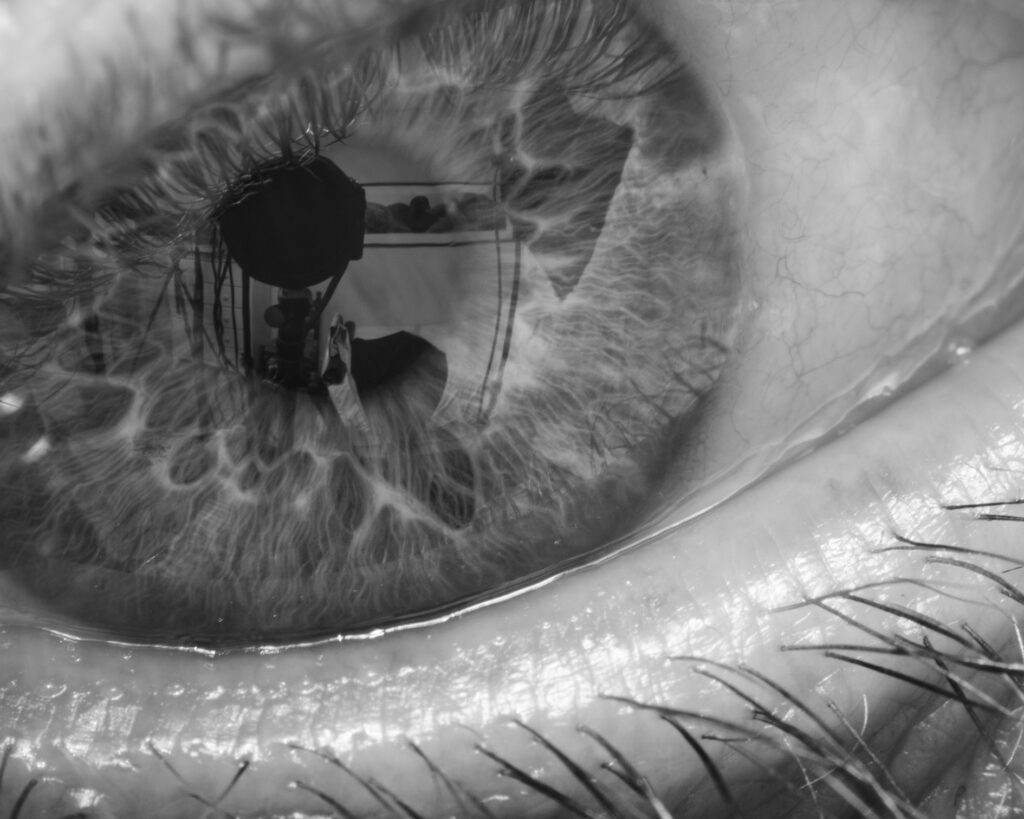
Serie Close-up
A close-up is a shot – in film or photography – that very tightly frames the subject.
Since it picks out just one part of the human body or an object, it is a highly intimate composition, with maximum aesthetic value, revealing physical qualities as well as flaws.
The process demands a certain affinity between photographer and subject and was often used by Nixon in his work with couples, which began in the 1970s and continued well into the 2000s.
« New-Topographics : Photographs of a Man-Altered Landscape »
New Topographics: Photographs of a Man-Altered Landscape was a photography exhibition organised in 1975 at George Eastman House in Rochester by the curator William Jenkins, with the help of Joe Deal.
For the exhibition, Jenkins amassed works by eight young American photographers – Robert Adams, Lewis Baltz, Joe Deal, Frank Gohlke, Nicholas Nixon, John Schott, Stephen Shore and Henry Wessel Jr. – as well as a couple of German photographers: Bernd and Hilla Becher.
The exhibition was a turning point in the development of documentary photography and the depiction of contemporary urban landscapes. Landscape photography shifted away from nature and began to document the effects of rapid growth on American towns and cities, joining the sociological movement set in motion by the Farm Security Administration, in which Walker Evans was involved, followed by Robert Frank’s work The Americans (1958).
Taking part in this group exhibition, so pivotal in the history of photography, cemented Nixon’s reputation. Going forward, he broke away from the New Topographics school and moved closer to his subjects, with more of a focus on people than landscapes.
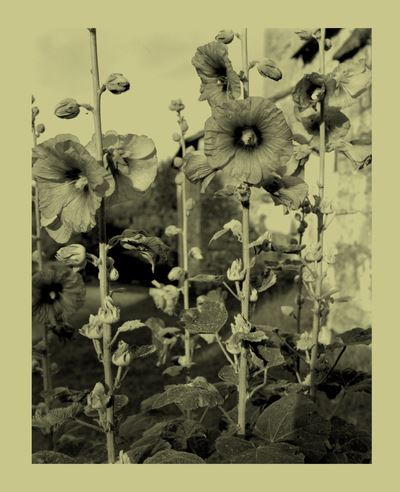
NICHOLAS NIXON’S GAZE IS A GAZE ACROSS THE TIME.
Gilles Mora
ET AU FIL DES ANNÉES, C’EST COMME S’IL S’ÉTAIT FAIT PLUS AIGU, PLUS EXIGEANT, PROCHE DU VERTIGE.
In co-edition with the Château d’Eau on the occasion of the exhibition in Toulouse, the Atelier EXB / Editions Xavier Barral publishes the first book by the photographer available in French.
Edition : Jordan Alves and Christian Caujolle
Graphic design : Jérôme Saint-Loubert Bié
Rereading : Renaud Bezombes
Fabrication : Charlotte Debiolles
BIOGRAPHY of the artist
Nicholas Nixon was born in Detroit in 1947 and decided to become a photographer while studying American literature at the University of Michigan.
He was a volunteer in the VISTA program in St. Louis in 1969-70 and he went on to earn his Master’s degree in photography from the University of New Mexico in 1974.
Nixon then moved to Boston, where, he began to work in black and white with a 8-by-10 inch view camera to photograph his adopted city. He contributed works to the group exhibition New Topographics in 1975,
« Photographs of a Man-Altered Landscape » at the George Eastman House.
His images of Boston were presented in his first solo exhibition at MoMA the following year and also in “Mirrors and Windows: American Photography Since 1960” at MoMA in 1978.
He taught at the Massachusetts College of Art and Design from 1975 to 2018.
His first monograph, “Nicholas Nixon: Photographs from One Year” was published in 1983.
In 1988 is published “Nicholas Nixon: Pictures of People” to accompany a mid-career retrospective at MoMA.
Since the 1970s, Nicholas Nixon has used his bulky 8×10 camera to capture spontaneous gestures and emotions, usually associated with photographs taken with a hand-held 35 millimeter camera. His preference for an 8-by-10 inch view camera can also be ascribed to the incredible level of detail it lent his prints, and its ability to simultaneously sharpen the background and foreground of an image.
Nixon began his career with urban and landscape photography, but soon turned to portraiture, in which he often attempts to connect the difference between public behavior and private moments.
He is best known for his series of portraits of his wife Bebe and her three sisters . The Brown Sisters, begun in 1975. He has also photographed the residents of care homes, people with terminal AIDS complications, and people interacting with their neighbors from both the public and private space. Meredith Fisher
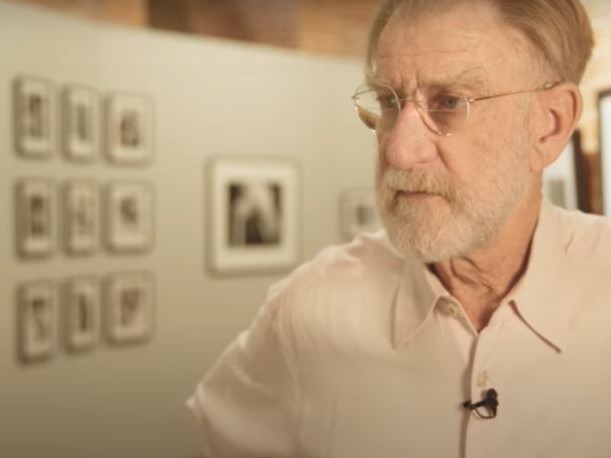
Sélection of books
- 2014 « Forty Portraits in Forty Years »
- 2013 « Close Far »
- 2009 « Live Love Look Last »
- 2005 « Home »
- 2003 « Nicholas Nixon Photographs »
- 2002 « The Brown Sisters »
- 1998 « School »
- 1991 « People With AIDS » (with Bebe Nixon)
- 1988 “Nicholas Nixon: Pictures of People” to accompany a mid-career retrospective at MoMA.
- 1983 First monograph, “Nicholas Nixon: Photographs from One Year
Nicholas Nixon’s Gift
The Château d’Eau Gallery warmly thanks Nicholas Nixon for the donation of three of his prints.
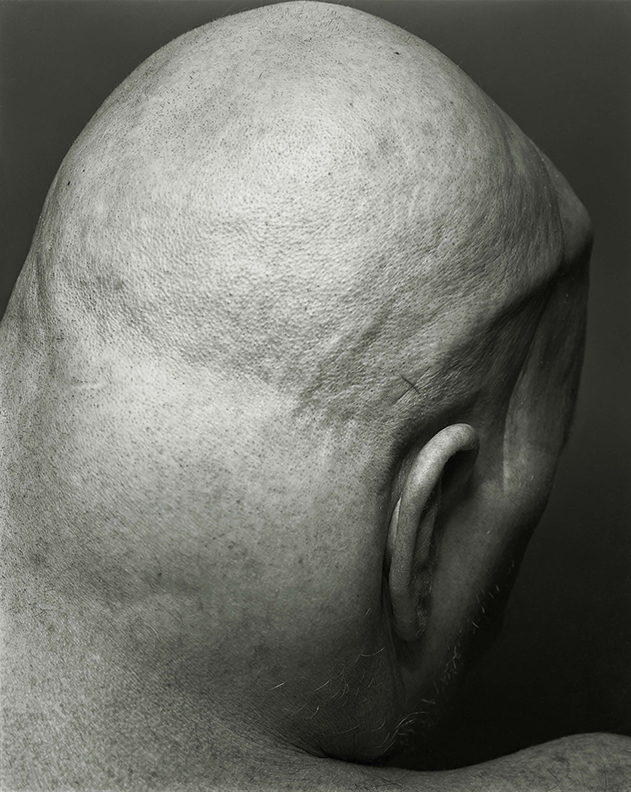

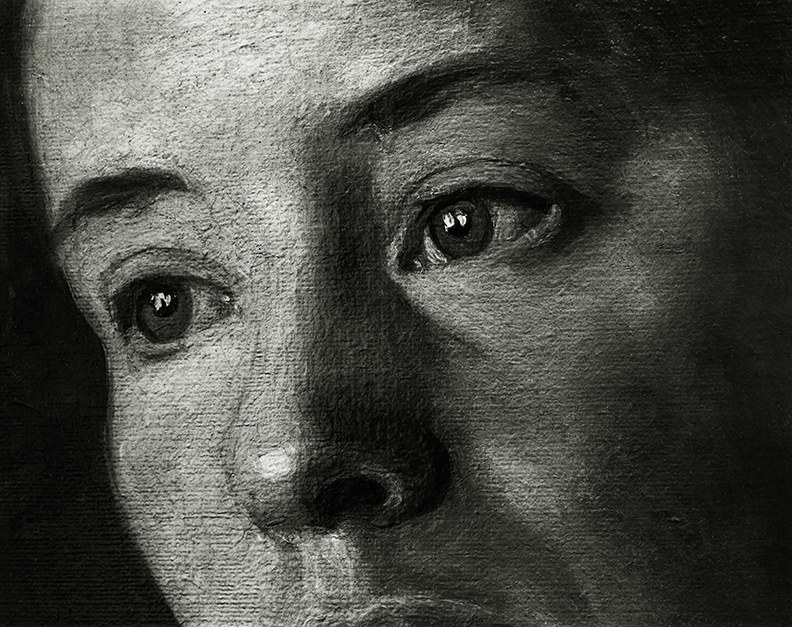
Discussion with Nicholas Nixon

